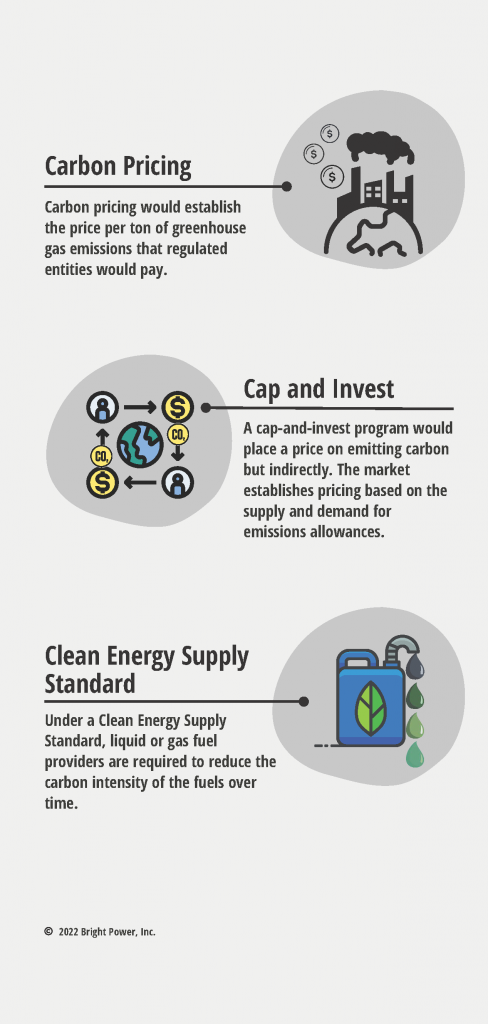 In 2019 New York passed the Climate Act, one of the most ambitious climate laws in the U.S. Among various new legislation, the Climate Act created the New York State Climate Action Council to have a dedicated entity focused on achieving the State’s climate agenda. The council, a 22-member committee, recently released a Draft Scoping Plan detailing how the State will meet its climate goals. Over the next 120 days, the Climate Action Council will accept public comments, with a final report published next year.
In 2019 New York passed the Climate Act, one of the most ambitious climate laws in the U.S. Among various new legislation, the Climate Act created the New York State Climate Action Council to have a dedicated entity focused on achieving the State’s climate agenda. The council, a 22-member committee, recently released a Draft Scoping Plan detailing how the State will meet its climate goals. Over the next 120 days, the Climate Action Council will accept public comments, with a final report published next year.
The Energy Highlights
Coming on the heels of a dramatic increase to emissions goals in 2019, the plan outlines the path for New York to attain 70% renewable energy by 2030 and reduce greenhouse gas emissions by 85% by 2050. The targets are ambitious, and the report includes plans for nearly every industry: buildings, transportation, electricity, waste, industry, agriculture, and forestry. Though the policies are aggressive, the report outlays tangible pathways towards meeting New York’s climate goals.
Many of the strategies discussed could significantly impact building owners and managers. For example, the plan recommends advanced codes for new development projects to build all-electric and resilient buildings. Governor Hochul has already indicated that she will pursue this legislation in 2022. Other recommendations include:
-
-
- A statewide energy benchmarking requirement for multifamily and commercial properties, with a proposed timeline set for 2023
- A statewide requirement for energy audits by 2025
- A statewide building performance standard in 2030, similar to NYC’s Local Law 97
- Enhanced green requirements for affordable housing
- An end to new gas service and prohibition on gas/oil replacements
 Plan Supports Added Funding Solutions
Plan Supports Added Funding SolutionsState policymakers acknowledge that any new statewide building laws will not succeed without increased funding to support these projects, and thus the plan proposes numerous incentive and financing solutions. The plan calls on the legislature to scale up existing incentives for energy efficiency, weatherization, electrification, electric vehicles (EVs), and EV charging. The Governor pledged to electrify 1 million homes and make another 1 million electrification-ready by 2030. Low to moderate-income households will make up 800,000 of these. In addition, the state is already formalizing a plan to significantly expand incentives for solar projects through the NY-Sun program.
State policymakers are evaluating numerous strategies to fund the program expansions mentioned above. The Council’s report explores several economy-wide options to put a price on carbon, including traditional carbon pricing, cap-and-invest, and a clean energy supply standard.*
Keeping an Eye on Policy
It’s too early to speculate how the policies outlined in the report will be implemented. The legislature will have broad jurisdiction about which specific strategies to pursue for each sector, but the breadth and sheer scope of the report is a strong indication that Albany policymakers are tackling the climate crisis head-on. Never before has New York State attempted to reduce emissions across every major industry, and it’s become increasingly important to pay attention to the policy landscape.
Bright Power will continue to monitor the proceedings and will provide updates as the plan is revised and implemented. You can contact our Bright Power experts for more information.
*Using a screen reader? Here’s the text we included in the graphic above.
- Carbon pricing would establish the price per ton of GHG emissions that regulated entities would pay.
- A cap-and-invest program would price emissions too, but indirectly. The market establishes pricing based on the supply and demand for emissions allowances.
- Under a Clean Energy Supply Standard, liquid or gas fuel providers are required to reduce the carbon intensity of the fuels over time.
-